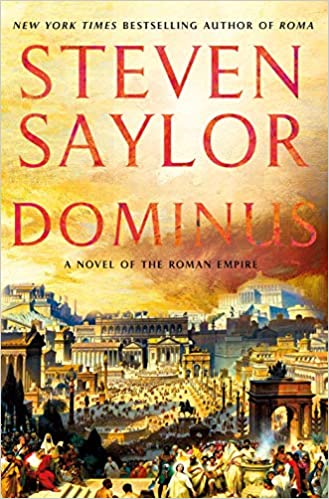Steven Saylor is certainly a gifted and well informed writer. Like any good writer of historical fiction, he has done his research in the primary sources as well as good secondary ones. This novel completes the trilogy with Roma and Empire preceding it. It begins where the second one leaves off, taking us from Marcus Aurelius in the latter half of the second century A.D. to the time of Constantine, in about 326 after the Council of Nicaea and before the real building of the city of Constantinople on the ruins of Byzantium. This particular novel is indeed more episodic than some previous ones, and it largely skips some of the more notable or notorious reigns for instance of Diocletian. Saylor largely avoids describing the prosecution, persecution, and execution of Christians, and it’s pretty clear from his portrayal of Constantine that he doesn’t have much sympathy for Christians, or for Constantine for that matter. While it is all very well to accurately show how many non-Christian Romans viewed Christians (on which see Ramsay MacMullen) and the revulsion they had for their so-called ‘atheism’ or refusal to worship the traditional Roman gods he would have been better served had he read Paul Doherty’s treatments of Constantine in novel form, and especially if he had read Peter Leithart’s Defending Constantine. Constantine to be sure, was no theologian, nor as pious as his mother Helena, but he deserved a better more well-rounded portrait, especially in light of the horrific and grossly immoral behavior of numerous previous emperors like Commodus or Decius. Yes there were more noble Romans like Marcus Aurelius, but the story as a whole is full of violence, narcissism, pandemics, with only occasional relief from some figures like Galen. The portrait of Galen by Saylor is quite helpful, and on the whole the story of the Pinarius family is very interesting— the sculptors and architects to various generations of rulers. Their portrayal generates some empathy for their trials and tribulations and triumphs in the midst of ongoing chaotic situations.
At the heart of the novel is a talisman… a fascinum thought to protect the family through many generations. Worn like a cross around the neck, it was in fact a winged phallus honoring the ancient deity Fascinus, though as the gold wore down over the ages, it came to look more like a cross. What was believed about this talisman was that it protected the family from harm, especially from the evil eye, the ancient convention that one could be cursed by others through the evil eye. Saylor knows ancient Roman religion, culture, and history well, it is however a pity that he does not really understand, nor apparently has little patience with ancient Christianity and its theology and ethics and developments.
Nevertheless, I have loved reading his various novels, especially the Gordianus series, and it would be a pity if his pen has run out of ink and his creative imagination has run dry. Let’s hope something more may emerge in the future. In the meantime, one can enjoy reading Harris, Davis, and before them Coleen McCullough and others who cover the same ancient Roman territory












